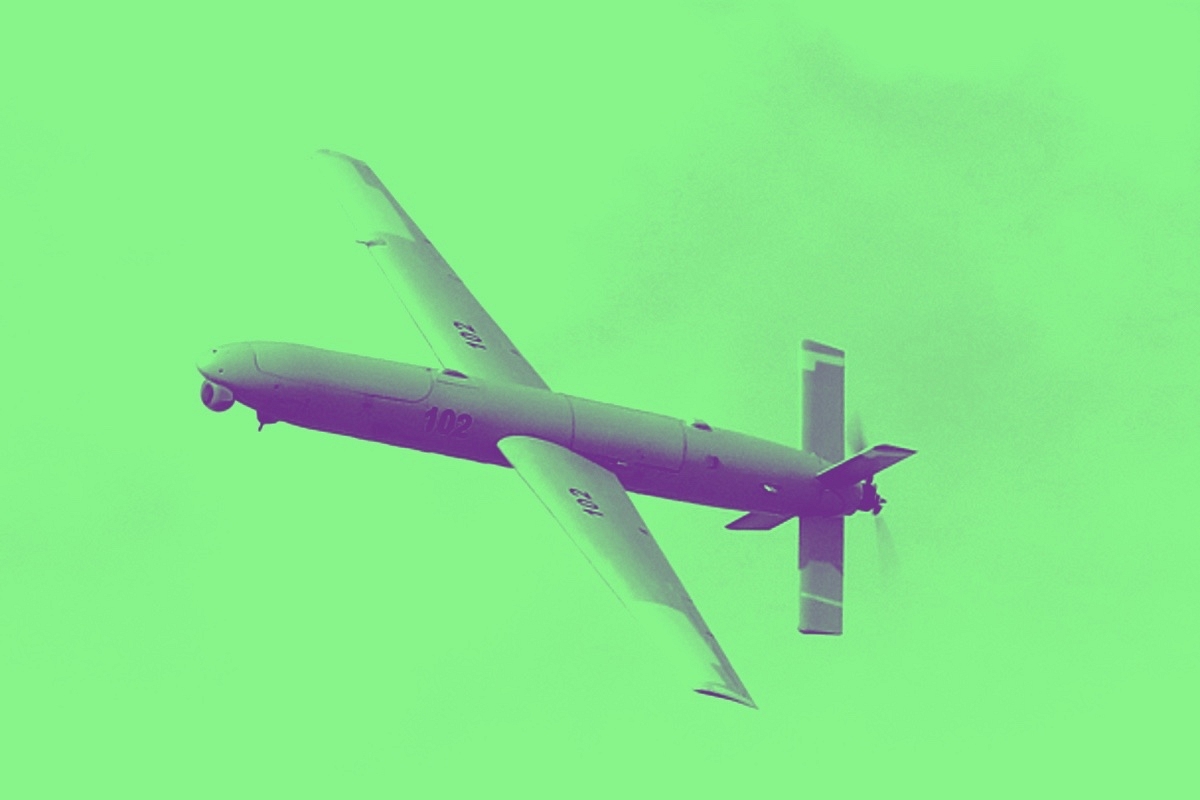Defence
Fly-By-Code: Next-Gen Tech Is Taking Pilots Out Of Drone Missions

(Representative Image)
Advancements in computing and sensor technologies are rapidly paving the way for a future where the final attack runs of cheap drones or loitering munitions over enemy targets become fully automated, requiring no human oversight.
As almost two years of the Russia-Ukraine war and the preceding Nagorno-Karabakh conflict between Armenia and Azerbaijan (fought in 2021) have amply demonstrated, low-cost drones (costing just $500 to $1000), and loitering munitions have made the battlefield more transparent, this has rendered all military targets — from transport trucks and vehicles to tanks, command posts to even anti-air systems — fair game.
Gone are the days when conventional surface-to-air missiles (SAMs) provided all-encompassing air cover.
Many have called this the 'democratisation' of precision and standoff strike capabilities, available to nation-states and non-state actors alike.
However, no matter how successful Ukraine and Russia are in using these drones against each other, they [drones] still suffer from a caveat — a human has to control the drone until the drone reaches its intended target — called man-in-the-loop (MITL) control.
Human control is even more relevant if the intended target is moving.
In almost all the FPV footage coming out of Ukraine of moving tanks or military vehicles getting accurately hit, a human is controlling the drone and guiding it to its intended target. To enable this, a line-of-sight (LOS) link is established between the drone and the human operator.
This LOS communication link is vulnerable to jamming and Electronic Warfare (EW). If the enemy can break the LOS link, the drone either returns to pre-fed coordinates (provided it has the range), diverts to an alternative target, or simply crashes — in all three cases — mission failure.
Both the Russians and Ukrainians know this, and that is why portable jamming solutions mounted on top of vehicles are springing up in Ukraine.
Semi-autonomous drones like the American Switchblade can address this to a certain extent. Switchblade can fly to its target area autonomously as pointed out by a human operator, while sending live video feeds back to the operator from its relatively inexpensive commercial-off-the-shelf (COTS) electro-optical/infrared sensor (EO/IR).
Once reaching close, Switchblade identifies all potential targets in the area using its automatic target recognition (ATR) algorithms from the live feed from its EO/IR sensors. It automatically homes in on its target, blowing it up with a high-explosive warhead. Since, in the terminal phase, the drone uses EO/IR sensors, it is immune to any jamming, also making portable jammers redundant.
However, the designation of the target and arming of the drone, once again, requires human input.
Moreover, the continuous electromagnetic emissions from the LOS link risk exposing the operator's position to the enemy, creating an opportunity for potential retaliation.
Static targets, on the other hand, are relatively easier to hit.
'Fire and forget' drones like the Iranian Shahed-136 — which has been used by the Russians quite successfully in destroying Ukrainian electrical grids and SAM systems are shining examples in this regard.
Equipped with inexpensive GPS receivers and inertial navigation systems (INS) and costing just $10,000, these drones once fed with target coordinates, can fly to their target without human inputs. But they cannot attack moving targets, and are extremely susceptible to GPS spoofing — both highlighting a glaring Achilles' heel in current drone warfare tactics.
This is where drones equipped with advanced sensors and computing power, enabling them to execute artificial intelligence (AI) algorithms in real time, come into the picture.
Imagine a scenario where a Ukrainian FPV drone sporting a dedicated AI chip trained on identifying enemy targets with requisite software and algorithms, using commercial-off-the-shelf (COTS) EO/IR sensors, navigates to an area of interest and successfully homes in on a moving Russian T-90M tank, all while combating intense jamming (remember, optical sensors are immune to electromagnetic jamming).
Or better still, identifying from a mix of armored vehicles, tanks, trucks, a high-value target like a command post, a switched-off radar, an artillery gun, or an EW system and blowing it up, all without any human interaction.
That is the sort of capability that AI-enabled autonomy brings to the table when the man-in-the-loop limitation is removed.
This also raises questions about the morality of using such autonomous drones indiscriminately. Many also fear a 'Terminator-like Hollywood-esque doomsday' scenario where AI will take over humanity.
Given the potential of these AI-based drones for Ukraine in the war against Russia, ex-Google Chief Eric Schmidt is funding and designing a mass-production-capable AI-equipped drone that uses optical sensors for terminal guidance under the project named White Stork, which will be able to find its target even in a zero-communication environment.
Whether this drone will be able to change the battlefield in Ukraine's favor remains to be seen.
Support Swarajya's 50 Ground Reports Project & Sponsor A Story
Every general election Swarajya does a 50 ground reports project.
Aimed only at serious readers and those who appreciate the nuances of political undercurrents, the project provides a sense of India's electoral landscape. As you know, these reports are produced after considerable investment of travel, time and effort on the ground.
This time too we've kicked off the project in style and have covered over 30 constituencies already. If you're someone who appreciates such work and have enjoyed our coverage please consider sponsoring a ground report for just Rs 2999 to Rs 19,999 - it goes a long way in helping us produce more quality reportage.
You can also back this project by becoming a subscriber for as little as Rs 999 - so do click on this links and choose a plan that suits you and back us.
Click below to contribute.
Latest